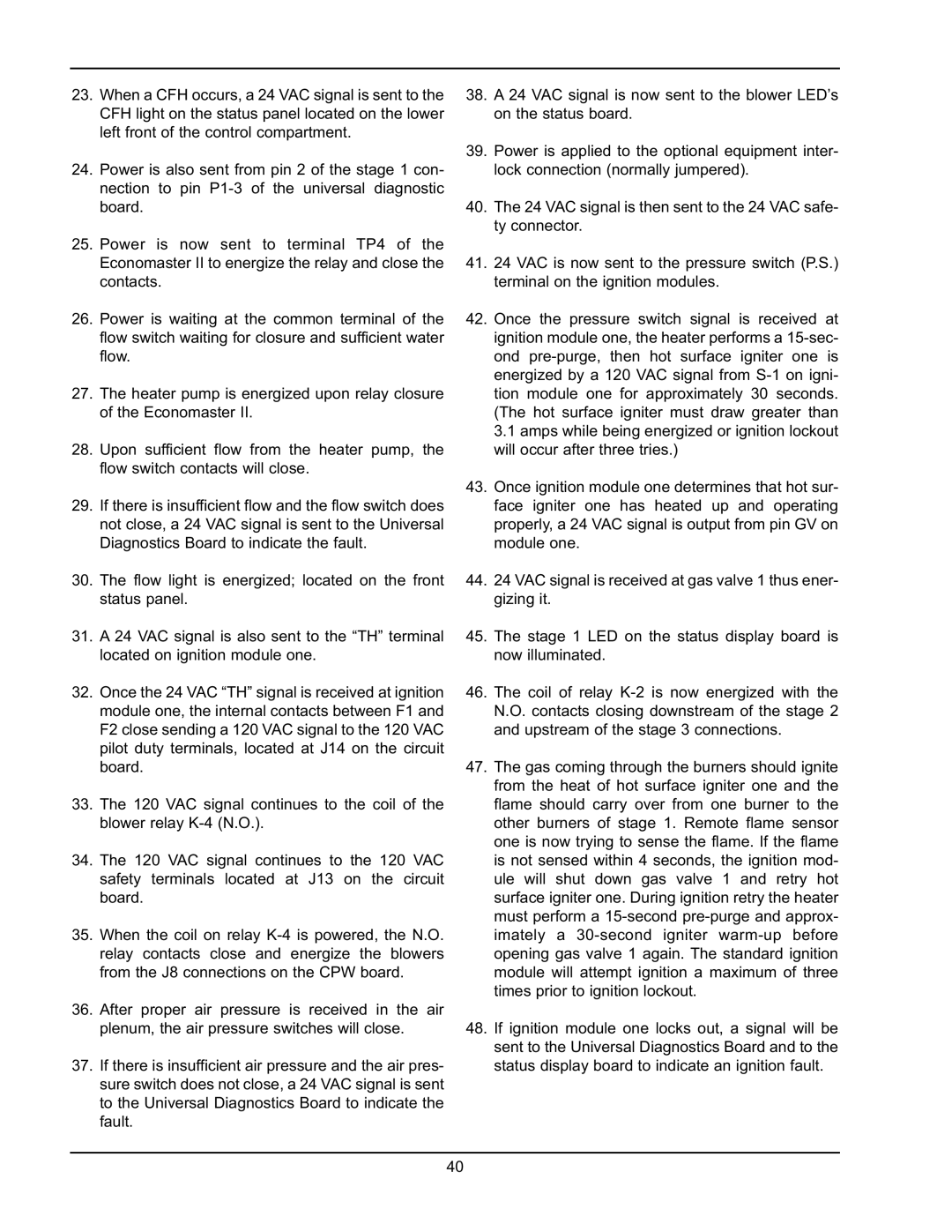
23.When a CFH occurs, a 24 VAC signal is sent to the CFH light on the status panel located on the lower left front of the control compartment.
24.Power is also sent from pin 2 of the stage 1 con- nection to pin
25.Power is now sent to terminal TP4 of the Economaster II to energize the relay and close the contacts.
26.Power is waiting at the common terminal of the flow switch waiting for closure and sufficient water flow.
27.The heater pump is energized upon relay closure of the Economaster II.
28.Upon sufficient flow from the heater pump, the flow switch contacts will close.
29.If there is insufficient flow and the flow switch does not close, a 24 VAC signal is sent to the Universal Diagnostics Board to indicate the fault.
30.The flow light is energized; located on the front status panel.
31.A 24 VAC signal is also sent to the “TH” terminal located on ignition module one.
32.Once the 24 VAC “TH” signal is received at ignition module one, the internal contacts between F1 and F2 close sending a 120 VAC signal to the 120 VAC pilot duty terminals, located at J14 on the circuit board.
33.The 120 VAC signal continues to the coil of the blower relay
34.The 120 VAC signal continues to the 120 VAC safety terminals located at J13 on the circuit board.
35.When the coil on relay
36.After proper air pressure is received in the air plenum, the air pressure switches will close.
37.If there is insufficient air pressure and the air pres- sure switch does not close, a 24 VAC signal is sent to the Universal Diagnostics Board to indicate the fault.
38.A 24 VAC signal is now sent to the blower LED’s on the status board.
39.Power is applied to the optional equipment inter- lock connection (normally jumpered).
40.The 24 VAC signal is then sent to the 24 VAC safe- ty connector.
41.24 VAC is now sent to the pressure switch (P.S.) terminal on the ignition modules.
42.Once the pressure switch signal is received at ignition module one, the heater performs a
43.Once ignition module one determines that hot sur- face igniter one has heated up and operating properly, a 24 VAC signal is output from pin GV on module one.
44.24 VAC signal is received at gas valve 1 thus ener- gizing it.
45.The stage 1 LED on the status display board is now illuminated.
46.The coil of relay
47.The gas coming through the burners should ignite from the heat of hot surface igniter one and the flame should carry over from one burner to the other burners of stage 1. Remote flame sensor one is now trying to sense the flame. If the flame is not sensed within 4 seconds, the ignition mod- ule will shut down gas valve 1 and retry hot surface igniter one. During ignition retry the heater must perform a
48.If ignition module one locks out, a signal will be sent to the Universal Diagnostics Board and to the status display board to indicate an ignition fault.
40
